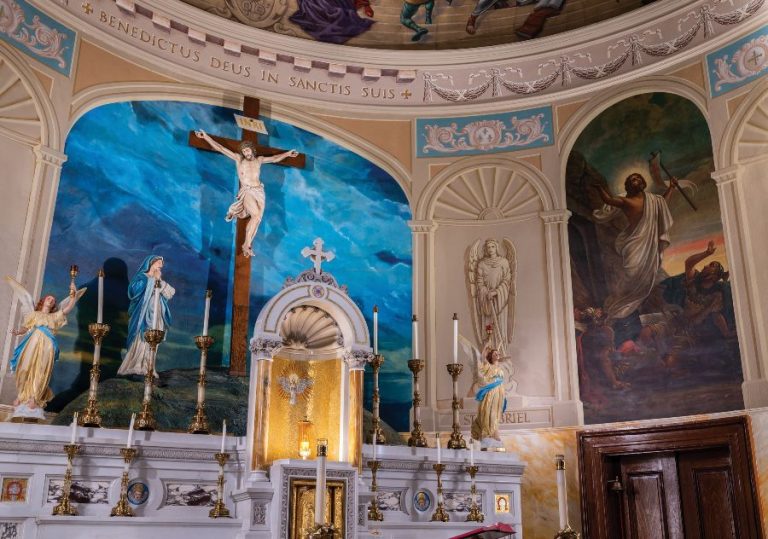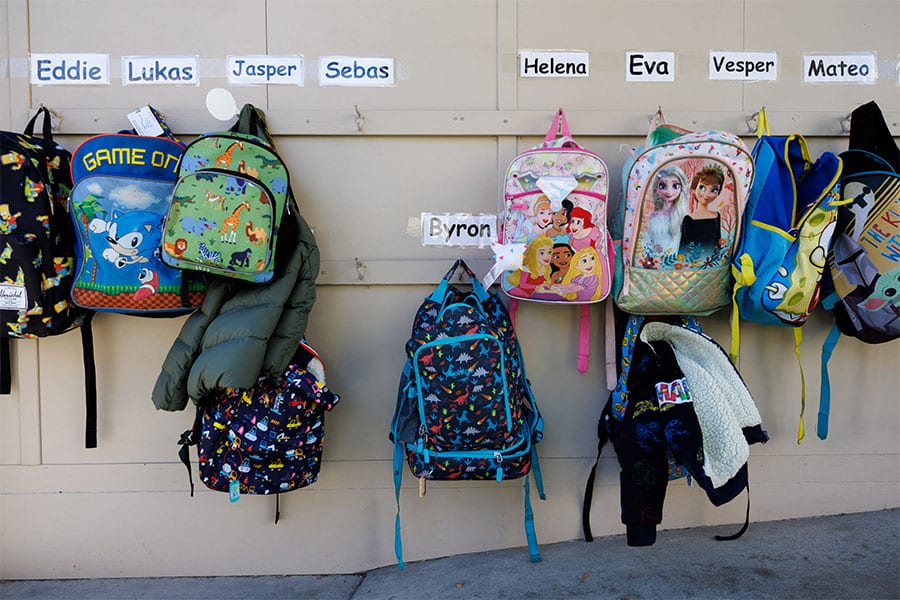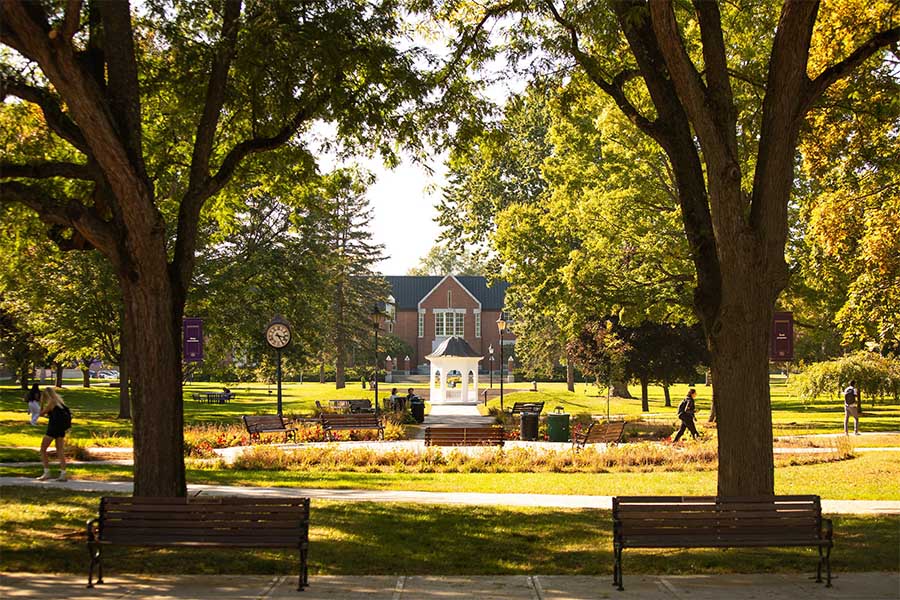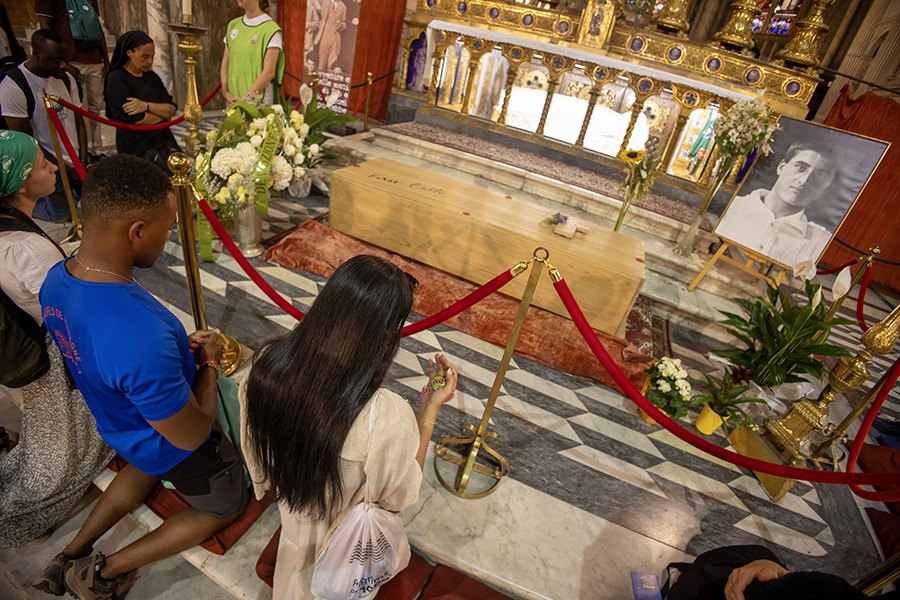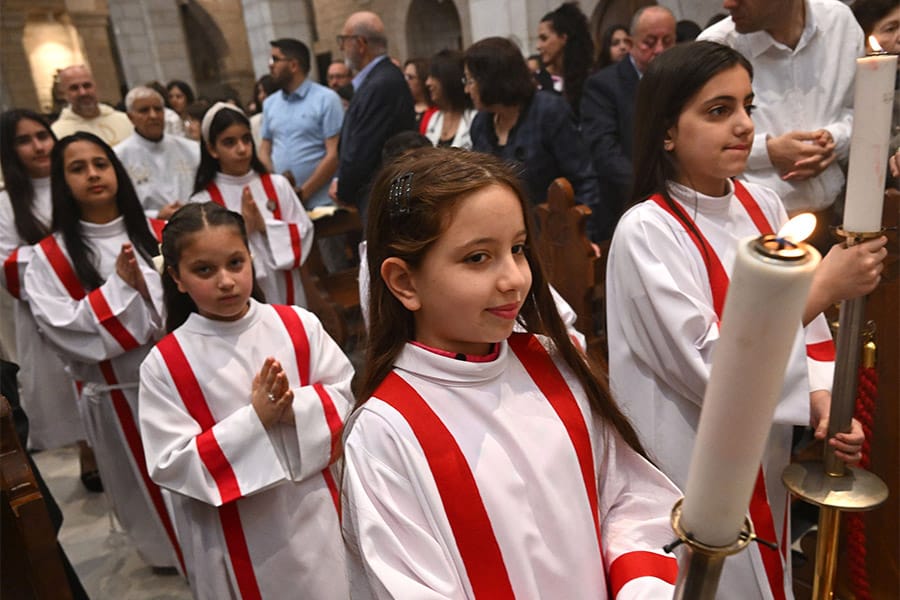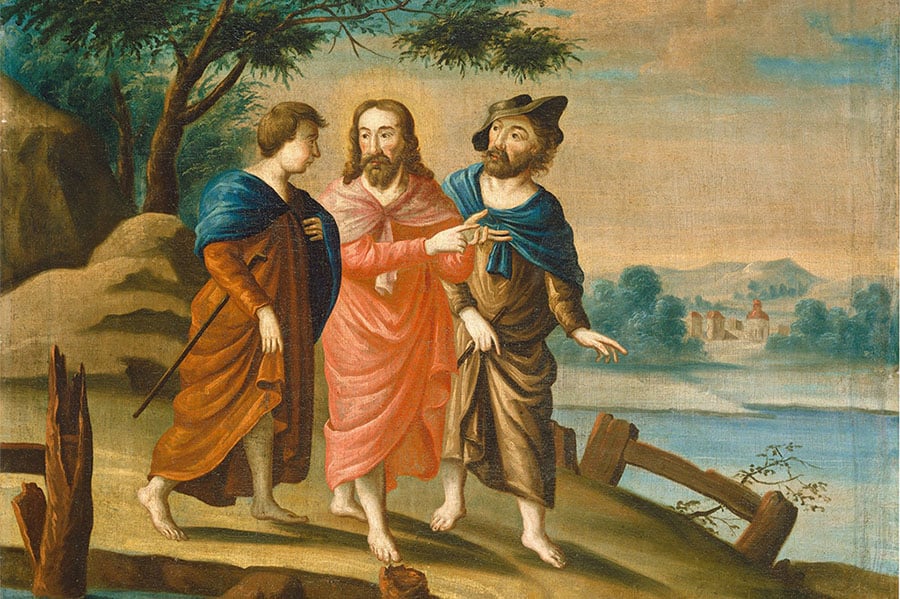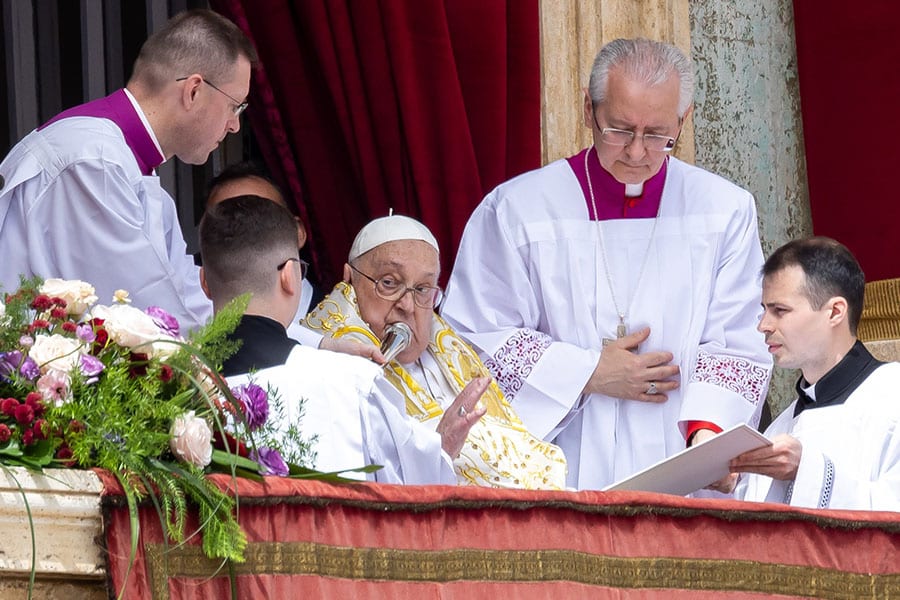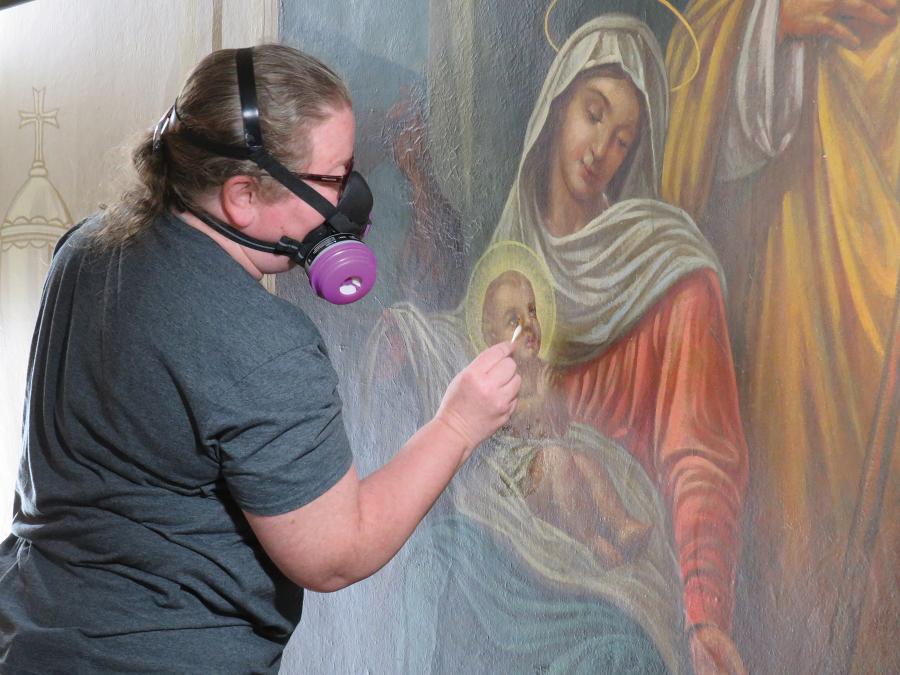
St. Leo the Great in Little Italy is unsure when it will again be able to host one of its traditional street festivals. When it does, however, visitors will be able take in the majestic imagery of the “Glorification of the Canonization of St. Leo the Great” and adjacent murals that have been restored in its apse.
The church was established in 1881. A year ago, just as the pandemic was accelerating, a mural of Jesus was drooping, evidence of water damage to artwork, some of which was added or altered in the early 1950s.
The murals include the Crucifixion; St. Leo’s canonization, above it; and the aforementioned crucifix flanked by scenes of the Nativity and the Resurrection in the apse, the semicircular niche that frames the sanctuary.
As Pallottine Father Bernard Carman, pastor of St. Leo the Great, discovered, the murals were not painted directly on the sanctuary’s plaster walls, but on canvas, which had then been adhered to the plaster.
“Behind the Crucifixion scene, behind the high altar, one of the canvases, a corner of one of them started to come loose,” he said. “It was already fairly loose when I first got here (almost) six years ago. Little by little, over time, it became more and more loose. … It is supposed to be a little bit more durable. I guess it is, because it is holding up.”
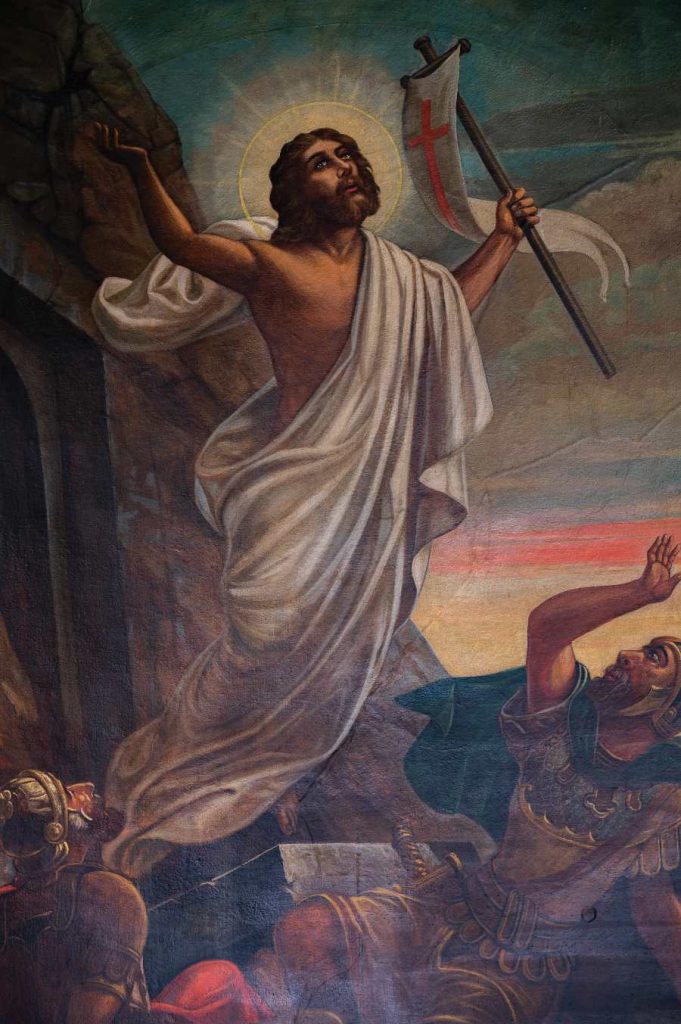
Their Achilles’ heal turned out to be a leaky roof, which caused moisture damage. Decades of candle soot had also darkened the images.
The cost to restore the art was more than $110,000, an amount the parish of 400 families did not have available. Two parishioners made generous donations, however, and between March and September of 2020, the images were cleaned and touched up by artist Amy Hollis.
The canvas was restored and adhered back to the walls. The roof issues were corrected. Lighting was also enhanced.
“Parishioners gave enough to cover the whole thing,” Father Carman said. “Otherwise. I don’t think we would have done it.”
The parish’s namesake was pope from A.D. 440 to 461, best known for persuading Atilla the Hun to scrap plans to sack the city of Rome, according to Father Carman.
“A lot of his writing survived,” the priest said. “They’re very good and very inspirational. He helped to set us on the path of Lent. He tried to regularize 40 days of preparation for the death and resurrection of our Lord.”
Statues of saints abound in the church. Father Carman uses the apse murals to illustrate homilies, and refers to the St. Leo canonization mural as “saints on a picnic.”
“It’s definitely a sacred space,” he said. “But with all those images of people around, it makes you feel very human. You’re surrounded by people.”
Sallieann Alborn, a parish corporator who was directly involved with the project, finds inspiration in the murals.
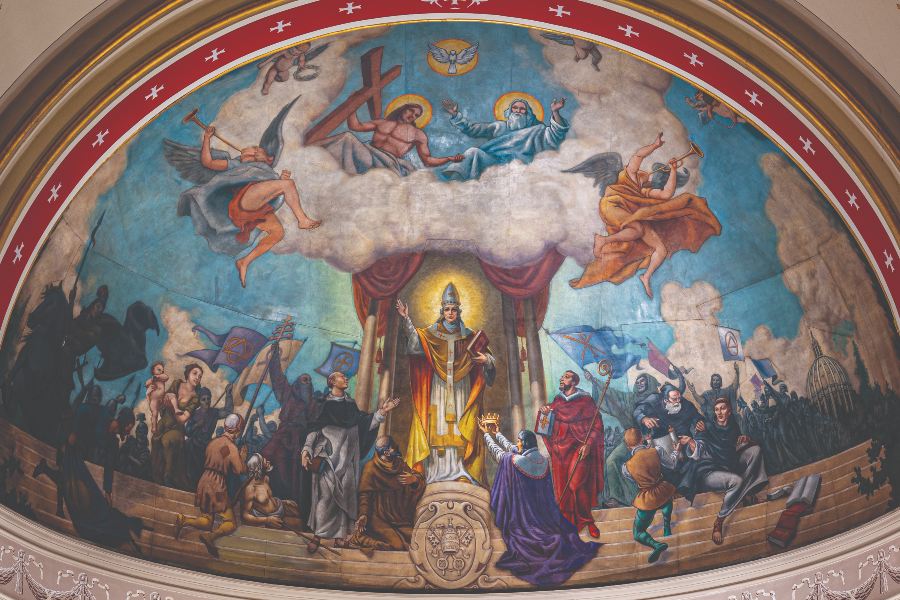
“I’ve always been inspired by the crucifix that sits on the mural,” she said. “I often just zone out and think about the sacrifice God made for our salvation. Every Sunday, really, I was always very moved by that. It challenges me personally in my discipleship as a Christian.”
Father Carman agrees with her assessment, of both the parish and the murals.
“It’s significant for the history of the parish,” he said. “They (parishioners) see it as part of the church, part of the parish. They treat it as if it was always that way, from the very building of the church. I think it’s worth the preservation, because of the era, the time period, it represents. I think that’s probably the greatest value.”
As COVID-19 restrictions begin to lift in Maryland, Baltimore City continues with stricter guidelines. According to the leadership of St. Leo the Great, decisions have yet to be made on the status of the St. Anthony Festival, a June tradition, and the St. Gabriel Festival, in August.
Copyright © 2021 Catholic Review Media

